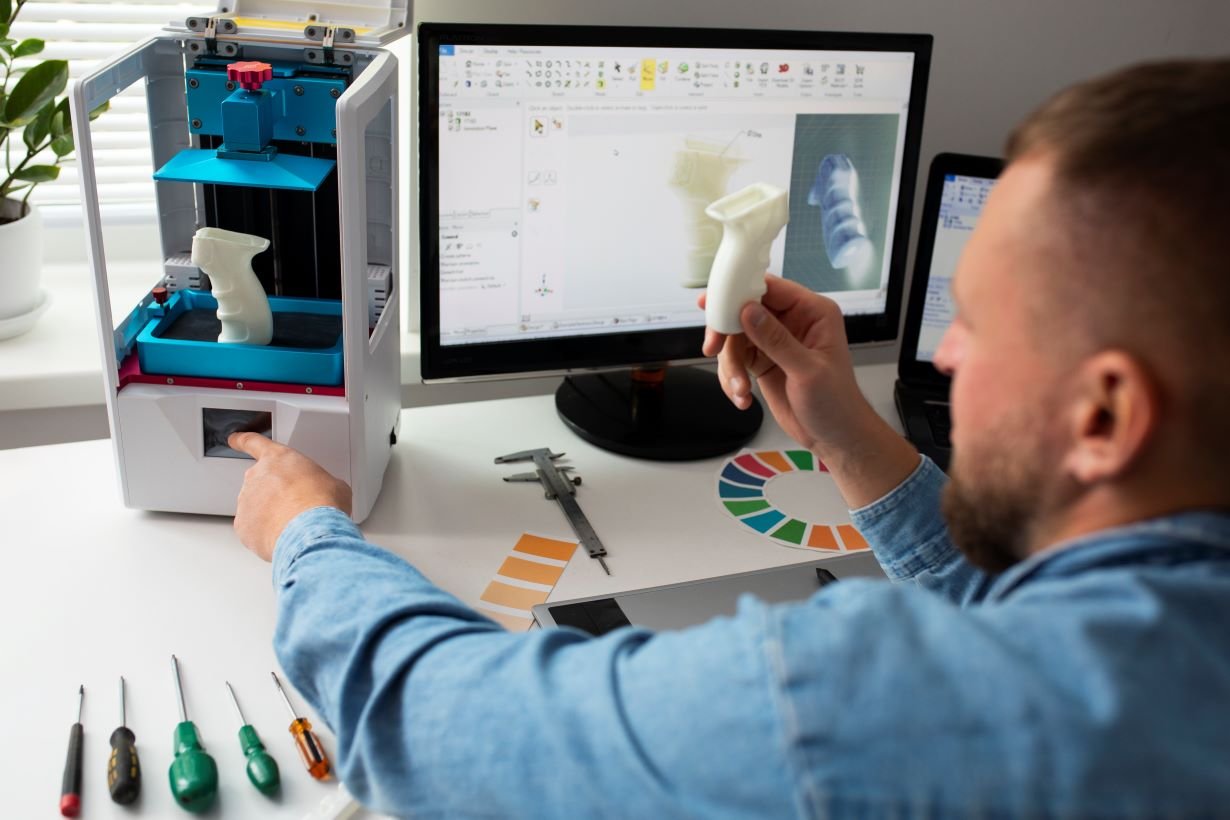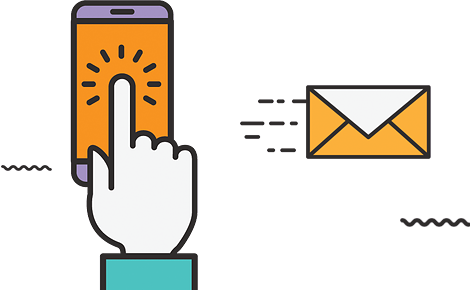
Augmented reality (AR) and virtual reality (VR) have graduated from tech demos to mainstream shopping tools. Shoppers can virtually try on sunglasses or place a sofa in their living room using a phone camera. According to Google, more than 90% of Americans currently use, or would consider using, AR for shopping, and 98% of those who have used AR while shopping found it helpful.
For brands, the numbers are compelling: Shopify’s data shows products advertised with VR/AR content experience a 94% higher conversion rate compared to products without it. Consumers expect immersive, interactive experiences – 43% of smartphone shoppers expect beauty brands to use AR and 47% expect the same from automotive brands.
As AR/VR commerce takes off, high‑quality 3D product models become the backbone of these experiences. In this article we explain why 3D models are essential for AR/VR shopping, provide statistics on adoption, discuss optimization considerations, and show how DevelopersTroop can help your brand embrace this next big shift.
What Is AR/VR Commerce?
Augmented reality commerce overlays digital information onto the real world. Shoppers can place furniture, appliances or decor items into their physical environment using smartphone cameras. Virtual reality commerce offers fully immersive spaces where customers can explore virtual showrooms or try on products through avatars. Both require detailed, accurate 3D models of products.
Key benefits of AR/VR shopping
- Increased confidence and reduced risk – By visualizing products at scale and in context, customers make more informed decisions, lowering return rates.
- Engaging experiences – Interactive product visualization keeps users on your site longer and encourages exploration.
- Personalization – AR/VR allows customization options such as color, size and configuration, giving shoppers control over their purchase.
- Brand differentiation – Immersive experiences position your brand as innovative and customer‑centric.
Why 3D Product Models Are the Backbone of AR/VR Commerce
AR and VR technologies can’t function without 3D assets. Each product must exist as a digital twin that can be rendered from any angle and under varied lighting conditions. Realistic 3D models enable:
- Virtual try‑on and placement – Products must look and behave like real objects when scaled, rotated and animated.
- Realistic materials and textures – Accurate PBR (physically based rendering) materials ensure items match their real‑life counterparts.
- Customizable variants – 3D models can store multiple finishes, colors and accessories, allowing customers to configure products on the fly.
By investing in high‑quality models now, brands future‑proof their content for emerging AR/VR platforms.
Adoption and Impact: Statistics You Need to Know
Rising consumer demand
- More than 90% of Americans currently use or would use AR for shopping.
- 98% of AR shoppers find it helpful, indicating strong satisfaction and retention.
- 77% of consumers prefer augmented reality for browsing products.
- 75% of mobile consumers using AR are satisfied with their experiences, highlighting AR’s role in mobile commerce.
Conversion and return rates
- Products with VR/AR content see 94% higher conversion rates.
- Interactive 3D configurators can increase conversions by 250% and improve buyer confidence.
- Returns plague eCommerce: 20% of online sales are returned, while only 9% of in‑person purchases are. Detailed 3D/AR experiences can reduce returns by ensuring customers understand exactly what they’re buying.
Industry expectations
- 43% of beauty shoppers and 47% of automotive shoppers expect AR capabilities from brands.
- Many consumers view brands that use AR as more innovative.
These numbers highlight the opportunity for brands who adopt 3D product models and AR/VR experiences early.
Optimizing 3D Models for AR/VR Commerce
Creating AR/VR‑ready assets isn’t as simple as exporting a high‑poly model. To ensure smooth experiences across devices, consider the following:
File size & poly count
AR apps run on smartphones and tablets with limited graphics power. Models must be optimized with lower polygon counts and efficient meshes without sacrificing critical details. Tools like decimation or retopology help reduce poly counts, while normal maps preserve visual fidelity.
Realistic PBR materials
Use physically based rendering (PBR) materials that react accurately to light. Ensure albedo, roughness, metalness and normal maps align with real‑world materials so objects look consistent across AR platforms. Test models under various lighting conditions to avoid unrealistic reflections or blown‑out highlights.
Texture resolution & compression
High‑resolution textures look great but can slow down mobile devices. Use optimized texture sets (e.g., 1024×1024 or 2048×2048 pixels) and compress them with formats like JPEG or WebP to maintain quality while saving bandwidth. Texture atlases can reduce draw calls and improve performance.
Cross‑platform compatibility
Different AR frameworks (Apple ARKit, Google ARCore, WebXR) have unique requirements. Export models in GLB/GLTF or USDZ formats, which support PBR materials and animations, and test across multiple devices. DevelopersTroop ensures your assets work seamlessly across iOS, Android and web‑based AR/VR platforms.
Interactivity & animation
Add subtle animations (e.g., opening a drawer, rotating a ring) to engage users. While optional, these interactions can increase dwell time and conversion rates.
DevelopersTroop’s Expertise in AR/VR‑Ready 3D Assets
At DevelopersTroop, we’ve helped clients deploy 3D models across AR shopping apps, virtual showrooms and VR configurators. Here’s what sets us apart:
- Optimized modeling and texturing – We balance detail and performance, ensuring models look fantastic without overwhelming mobile GPUs.
- Rigging and animation – Our rigs enable interactive demos, such as product parts unfolding or being assembled, adding wow factor and explaining features clearly.
- Cross‑platform delivery – We export to GLB/GLTF, USDZ, FBX and other formats, ensuring compatibility with ARKit, ARCore, WebXR, Unity and Unreal.
- Integrated user experience – Our team collaborates with developers and UX designers to embed 3D models into eCommerce sites, apps and VR experiences seamlessly.
- Continuous optimization – We monitor emerging technologies to keep your assets ready for tomorrow’s hardware.
Best Practices for Implementing AR/VR Commerce
- Start with hero products – Pilot AR/VR with best‑selling items to measure ROI and gather feedback.
- Educate your audience – Provide clear instructions and tooltips so users know how to engage with 3D models.
- Promote across channels – Leverage email marketing, social media and on‑site banners to drive traffic to AR/VR experiences.
- Measure performance – Track metrics like dwell time, interaction rates, add‑to‑cart conversion and return rates. Use A/B tests to refine your approach.
- Iterate and expand – Use insights from early campaigns to refine models, animations and user interfaces before scaling across more products.
Conclusion & Call to Action
AR and VR commerce are reshaping online shopping. With consumers increasingly demanding immersive experiences and statistics showing dramatic conversion lifts, now is the time to invest in high‑quality 3D models.
Partnering with DevelopersTroop ensures your products are ready for AR/VR on all platforms. Our team combines artistic precision, technical optimization and industry insight to create assets that engage shoppers and drive sales. Contact DevelopersTroop for expert 3D modeling services in Florida and stay ahead of the next big shift in eCommerce.



